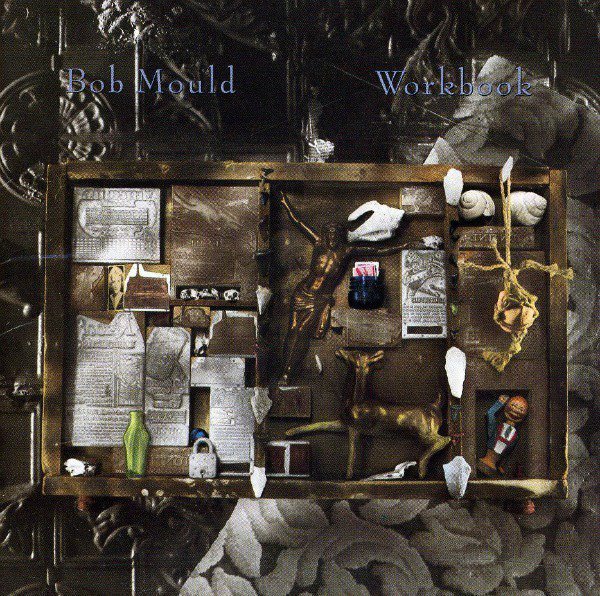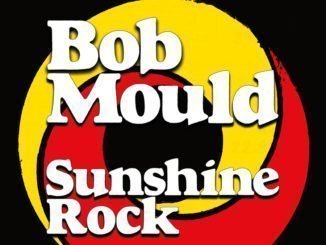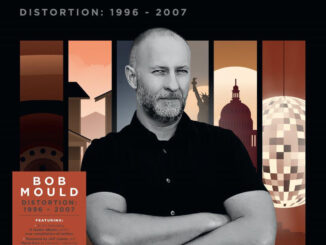
In 1988 the seminal band Husker Du spectacularly imploded due to external pressure and numerous self-inflicted wounds. Shell-shocked Frontman Bob Mould would take himself away from the toxic environment that had grown up around Husker Du. He would relocate to rural Pine City, Minnesota to regain his equilibrium and perspective. He quit the drugs and booze signed to the Virgin Records label and began work on his debut solo album, “Workbook”. The release would represent Mould expanding his sonic palette by paring back his trademark wall of sound guitar sonics. He opted instead for sounds drawn from folk, country and even classical elements. This somewhat radical decision would massively influence the budding Alternative Rock genre as legendary bands like REM and Nirvana sang praises for the release.
After the release of Workbook a number of famous performers; Scott Devenoff of the National, the legendary Richard Thompson, Black Francis of the Pixies and Natalie Merchant would have tipped the album as being influential in developing their works. Mould’s inspired introduction of the cello intertwine with an acoustic guitar would soon become a feature in many Altie albums of the era. Mould’s head snapping directional change drew initial attention from listeners who then end up being mesmerized by Mould’s willingness to turn his insides out with his startlingly honest songwriting.
Workbook was recorded rather rapidly between December 1988 and January 1989. Mould would self-produce the album with the support of Drummer Anton Fier of the Golden Palominos and bassist Tony Maimone of Pere Ubu. They would record at Prince’s Paisley Park Studio in Minnesota and Grog Kill Studio in Willow, NY. Mould had written 40 songs prior to entering the studio; this was pared down to 11 on the initial release. Workbook would reach 127 on the overall Billboard charts and the single See A Little Light would attain #4 on the Modern Rock Billboard chart. The real success of the album was the impact it had in the Alternative Music world where word of mouth and effusive praise was ladled on the release and would make it a seminal album for those practising in the genre.
Mould has since written about the period before and during the recording of Workbook as a time of catharsis. It was a period when Mould would attempt to move on from the anger and bitterness in the aftermath of his time in Husker Du to become a more centred individual. The repercussions from the events that finished off the band and an abusive childhood would linger with Mould for decades. Workbook would begin the healing process helping Mould progress past the pain. Workbook was a work in contrast, where with Husker Du Mould’s incendiary guitar play worked as a shield to protect his inner workings, the more quiet and contemplative Workbook would openly display a man turning inward and revealing what he found.
The album would begin with Sunspots and a gorgeous guitar that was a departure from the full-on classic guitar attack from Husker Du days. The song was a gateway and preparation for what was to follow. The instrumental would show Mould was daring to become something beyond his established trademark. This is followed by the winning song Wishing Well that pulled no punches as it examined the turmoil Mould had encountered after Husker Du’s breakup. It contained the warning to be careful what you wish for, “Wishing well gives you all that you desire… there’s a price to pay for a wish to come true, trade a small piece of your life.” Mould blended his distinctive rock guitar sound, his ear for a great hook and excellent wordsmithery to not only produce a great sounding track but a timelessly appealing universal narrative. Wishing Well is followed by Heartbreak A Stranger which is informed by the tempestuous time in Husker Du and his acknowledgement that he had to come to terms with the fallout to reach peace of mind, “ The words exchanged for revenge inside, you know these things take time… how can you heartbreak a stranger?” This song sonically represents the starting point for Mould’s change in musical approach with its singer/songwriter feel. It also showcases Mould’s vocal abilities which are equal to his fantastic guitar play.
The best-known track on the release, See A Little Light has an uplifting sonic that makes it so appealing. That uplift is surprising to find when it is understood in the context of the serious depression Mould was submerged within during its writing. It also kicked out against his troubled childhood. Poison Years could easily have appeared on Husker Du’s last release, Candy Apple Grey with its dark and brooding vibe. The imagery of poison referred to in the title characterizes a very bitter theme about the betrayal and pain that existed between the bandmates. Mould acknowledges he had to move on and rise above the anger, but that is easier said than done, “Poison thoughts in my mind got to free myself from this bind, I know I’m a reasoning guy…every time you knock me down it’s all I can do to get up off the ground and pull myself apart again.” To move on he knows the poison must come out and his way of allowing that to happen is to turn on the tape and let the venom out. Although the reasons for Mould’s pain are specific the song’s lyrics are universal for anyone who has experienced betrayal and abuse making the song so brilliant.
Sinners and Their Repentances is an examination of how easy it is to rationalize bad behaviour in order to save face. Mould questions what the difference is between a sin and a lie. He goes further asking if the difference is the intention or weakness behind the act. Mould offers no final judgment instead of letting the question exist out there in the ether. What makes the track so engaging is that Mould does not exempt himself from blame, “We’ve all sinned before, I have sinned before” making him approachable rather than preaching. Musically the effective use of the guitar and cello will reverberate in his future works and in the works of performers like REM; you can hear the seeds of Losing My Religion in this track.
From strength to strength Mould unleashes Brasilia Cross the Trenton which would become a big concert favourite for fans. This inspired track contrasted Mould’s then current surroundings in upstate Minnesota with the broader world. In the narrative, he uses his imagination to transport himself to exotic Brasilia instead of pedestrian Trenton. The song itself came to Mould in a dream fully realized. The enticing Folk approach to the instrumentation is fully fleshed out by Mould’s able musical abilities.
Compositions for Young and Old underlines Mould’s newly gained appreciation for the simple and timeless. Inspired by an ages-old songbook he’d found, this song bears witness to Mould mourning the loss of the simplicity of a bygone era. He captures the bittersweet yearning for a simpler time with the lyric, “Things used to be so simple, long time ago. Now everything is so expensive and complicated. I hear you need a license for just about everything.” Compositions for Young and Old is an evocative track. Lonely Afternoon continues this topical rumination with a realistic narrative about loneliness and being held down by self-doubt. The inherent sadness of the narrative is belied by the more aggressive rock tone of the sonic. This song is probably the most rock-sounding on the release utilizing that angry sonic guitar attack that is trademark Mould, show off why he is such an esteemed guitarist.
The brilliant songwriting on Dreaming, I Am draws an excellent allegory about rock stardom, equating it to chickens in a chicken coop and fame as the fox that slyly drags away and kills its willing victims. The fox can be characterized as fortune, sycophants and parasites you encounter as an artist along the way. This is all conveyed musically in a hypnotic, gauzy sonic with strong 80’s pop underpinnings. The final track of the original release is Whichever Way the Wind Blows which plays on the imagery of Frogger and the classic joke “Why did the chicken cross the road”. Mould examines how we all attempt a different approach to surviving life but it inevitably ends the same way in death. This track is a real barnburner loaded with outrageous guitar attacks and a swirling mad feeling. It is Mould at his most incendiary unleashing his seething anger to reach catharsis which is represented by the peaceful wind chimes at the end.
Workbook was a Husker Du induced catharsis captured on tape. It represented the long process Mould would undergo to come to grips with the tempestuous period that was his time in Husker Du. The release was his first steps toward repairing the damage done to Mould’s psyche not only by the band but the scary tragic childhood he had endured. What becomes evident to any listener who has followed Mould’s legendary musical career is that he is a triple thread, gifted musician, vocalist and songwriter. He has always had an impeccable ear for a great sonic hook, and his lyrics are engaging prose even when encountered without accompaniment.
Mould would move on from Workbook with numerous solo record outings, the forming of the band Sugar and writing his autobiography. He has remained a prolific musical artist who has now clocked decades on his career odometer. Along the way, he has earned a reputation for being one of the seminal Godfathers of Alternative. Workbook would give the music world its first glimpse at what Mould would become after the din of Husker Du diminished. The release displayed a resilient performer capable of producing the introspective revelation that is the timeless Workbook.





Be the first to comment